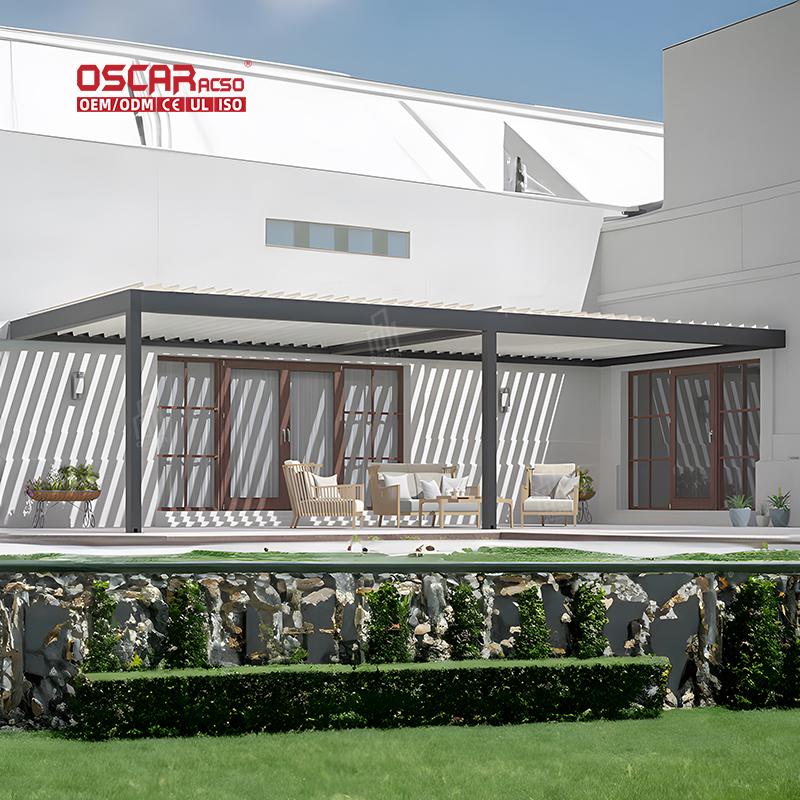Selecting a Pergola Material, Crafting Your Ideal Outdoor Sanctuary
🌿 The Foundation of Your Outdoor DreamImagine a structure that transforms your backyard into a stylish, functional l...
🌿 The Foundation of Your Outdoor Dream
Imagine a structure that transforms your backyard into a stylish, functional living space. The material you choose for your pergola is the cornerstone of this transformation, dictating its aesthetics, durability, and the amount of upkeep it requires. With options ranging from classic wood to modern aluminum and low-maintenance vinyl, selecting the best one can feel overwhelming. But fear not! This guide will help you navigate the pros and cons to find your perfect match.
Wood: Natural Charm with a Need for Care 🪵
Wood is the timeless choice for a reason. It brings unparalleled natural warmth and rustic elegance to any garden, seamlessly blending with its surroundings. Popular choices include Cedar, Redwood, and Pressure-Treated Pine.
- •
Cedar: Prized for its natural resistance to decay, insects, and rot, cedar boasts a beautiful reddish-brown hue and a pleasant aroma. It’s lighter, making it easier to work with, but still plenty sturdy.
- •
Redwood: Offers similar natural durability and a rich, elegant color that ages gracefully. It’s a premium option that tends to remain cooler to the touch in direct sunlight.
- •
Pressure-Treated Pine: The most budget-friendly wood option. It’s infused with chemicals to resist decay and insects, and it can be stained or painted to your desired color. However, it may not have the innate beauty of cedar or redwood.
The catch? Wood requires regular maintenance like staining or sealing every couple of years to protect it from the elements. Without proper care, it can warp, crack, or rot over time.
Aluminum: Modern Strength with Minimal Upkeep 🦾
For a sleek, contemporary look and incredible durability, aluminum is a top contender. It’s strong, lightweight, and built to last with very little effort on your part.
- •
Why it shines: Aluminum is rot, rust, and corrosion-resistant. It won’t warp or crack, and it typically only needs an occasional wash with soap and water to look new.
- •
Superior performance: High-quality aluminum pergolas can withstand harsh weather, including heavy winds and snow loads. Many modern designs feature adjustable louvered roofs for ultimate control over sunlight and shade.
- •
Style and cost: It offers a clean, modern aesthetic and is available in various powder-coated colors. While often a higher initial investment than wood, its longevity and minimal maintenance can make it more cost-effective over decades.
A consideration is that aluminum can feel hot in direct summer sun and lacks the natural warmth of wood.
Vinyl: The Low-Maintenance Alternative 🧊
Vinyl pergolas are champions of easy living. They’re perfect for homeowners who want a hassle-free structure without the need for painting or staining.
- •
The easy life: Vinyl is virtually maintenance-free, typically only requiring an occasional rinse or power wash. It’s also resistant to rot, decay, and insects.
- •
Durability questions: While durable, vinyl can be susceptible to expanding and contracting in extreme temperatures and may fade under strong UV rays over time. It’s also generally less sturdy under heavy snow loads compared to aluminum or wood.
- •
Aesthetics: It often comes in limited colors (like white or beige) and cannot be repainted later. Some homeowners feel it lacks the premium look of natural wood or the sleekness of metal.
Beyond the Big Three: Other Materials 🔄
While wood, aluminum, and vinyl are the most common, other options exist for specific needs.
- •
Fiberglass: A lightweight and strong material resistant to rot and insects. However, it’s less common and offers limited design and color options.
- •
Tropical Hardwoods (e.g., Ipe, Mahogany): Exceptionally dense, durable, and naturally resistant to everything, including fire. They offer a luxurious look but come with a very high price tag and require specialized tools for installation.
- •
Composite Wood: Made from a mix of wood fibers and recycled plastics, composites mimic the look of wood with enhanced durability and very low maintenance. They resist splintering and fading but come at a higher upfront cost.
Your Decision, Your Lifestyle: How to Choose 🤔
So, which material is truly the best? The answer is deeply personal and depends on your priorities.
- •
Ask yourself:
- •
What’s my budget? Consider both initial cost and long-term maintenance expenses.
- •
How much maintenance am I willing to do? Be honest about the time you want to spend on upkeep.
- •
What style complements my home? Do you prefer rustic, modern, or formal?
- •
What’s my local climate like? Consider sun exposure, rainfall, humidity, and snow.
- •
My ultimate insight? There’s no one-size-fits-all “best” material. The perfect choice is the one that aligns with your vision, lifestyle, and willingness for upkeep. Invest in the highest quality your budget allows within your chosen material category—superior craftsmanship and materials will always pay off in longevity and satisfaction.


